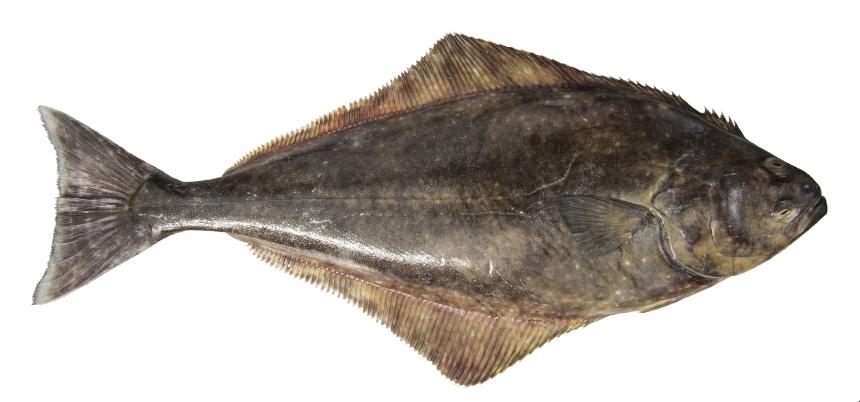The largest and most valuable flatfish in the northeast Pacific ocean; abundant throughout the region. Important as both a commercial and recreational species.
Description and Range
Physical description
Pacific halibut are almost always right-eyed, but may occasionally be left-eyed. The eyed side is greenish brown to dark brown or black with lighter blotches; the blind side is milky white. The body is a robust elongated diamond shape covered in small smooth scales. This species has a caudal fin that is crescent-shaped and often indented near the edges. The lateral line has a high arch over the pectoral fin with no accessory dorsal branch. Pacific halibut have a medium to large mouth with two rows of teeth on the upper jaw and one on the lower. The area between their eyes is flat and slightly concave. This species has an anal spine.
There are confirmed records of Pacific halibut reaching 267 cm (105 in) in length and 226 kgs (500 lbs) in weight but there are unconfirmed reports of fish much larger (up to 2.7 m and 317 kgs). The maximum reported age is 55 years.
Geographic range
Pacific halibut range from the Bering Sea in the north to Point Camalu in northern Baja California in the south. They are found in depths from 5 to 1097 m (16-3,600 ft); they are usually found from 27 to 274 m (89-900 ft) in the summer and deeper depths during the winter.
State record
- Weight
- 288.00 lbs
- Angler
- Vic Stevens
- Location
- Swiftsure Bank
- Date Caught
- September 9, 1989
